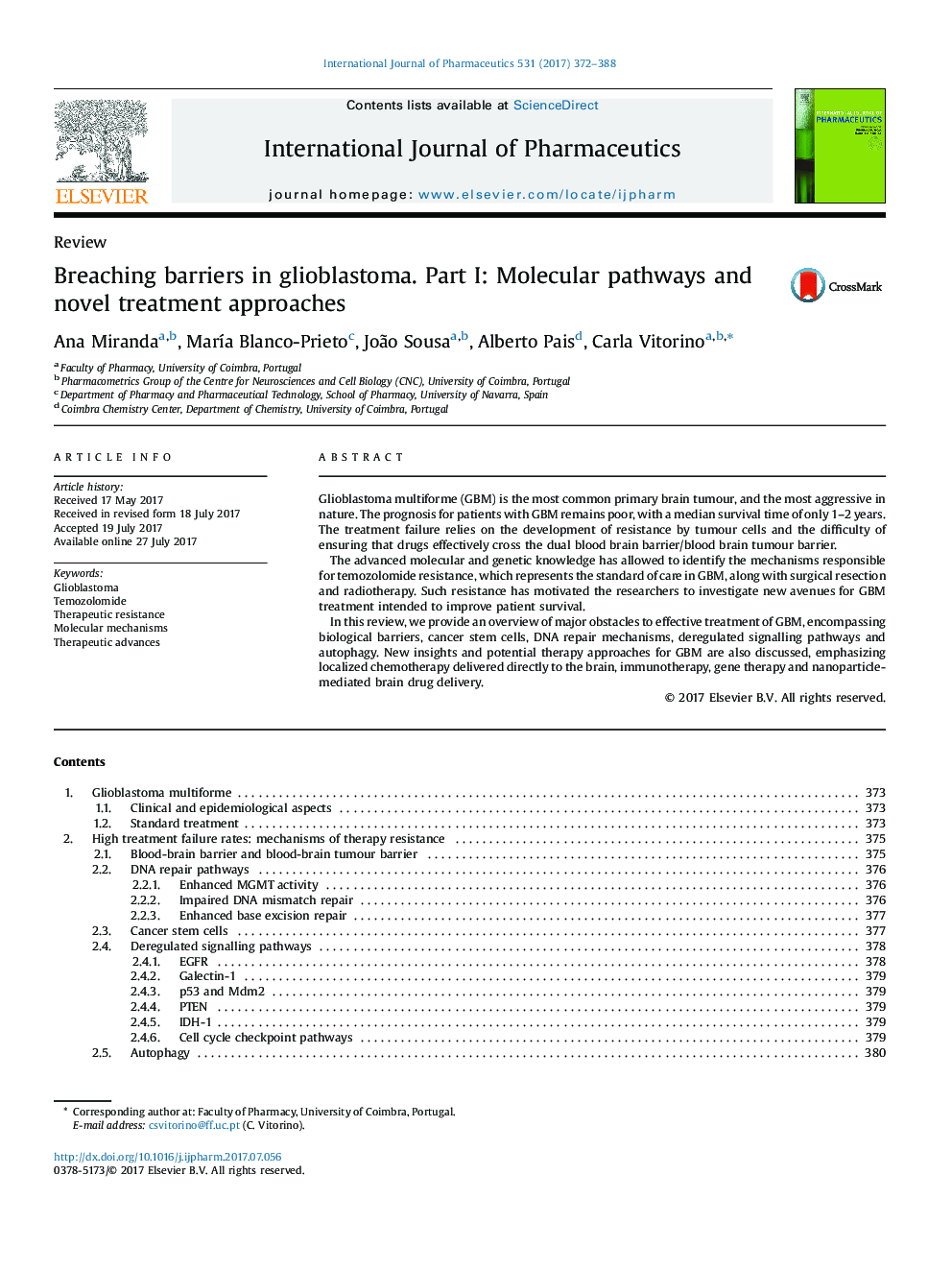| Article ID | Journal | Published Year | Pages | File Type |
|---|---|---|---|---|
| 5549956 | International Journal of Pharmaceutics | 2017 | 17 Pages |
Glioblastoma multiforme (GBM) is the most common primary brain tumour, and the most aggressive in nature. The prognosis for patients with GBM remains poor, with a median survival time of only 1-2 years. The treatment failure relies on the development of resistance by tumour cells and the difficulty of ensuring that drugs effectively cross the dual blood brain barrier/blood brain tumour barrier.The advanced molecular and genetic knowledge has allowed to identify the mechanisms responsible for temozolomide resistance, which represents the standard of care in GBM, along with surgical resection and radiotherapy. Such resistance has motivated the researchers to investigate new avenues for GBM treatment intended to improve patient survival.In this review, we provide an overview of major obstacles to effective treatment of GBM, encompassing biological barriers, cancer stem cells, DNA repair mechanisms, deregulated signalling pathways and autophagy. New insights and potential therapy approaches for GBM are also discussed, emphasizing localized chemotherapy delivered directly to the brain, immunotherapy, gene therapy and nanoparticle-mediated brain drug delivery.
Graphical abstractDownload high-res image (222KB)Download full-size image
